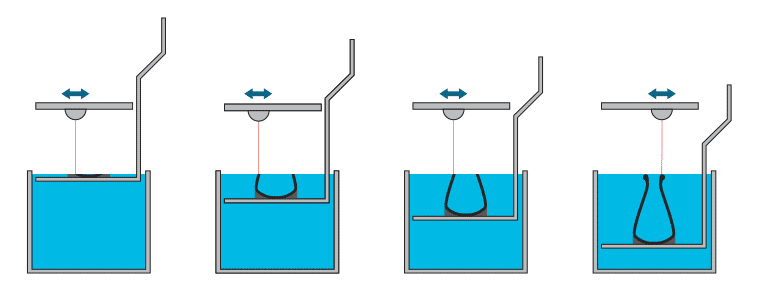Stereolithography

The machines for resin-based 3D printing use neither powder nor filament; they use liquid resin. At i.materialise, our Mammoth printers can print up to a length of 2.1 meters (6.9 feet).
The stereolithography process takes place in a large tank and begins with a layer of liquid polymer spread over a platform. Since this piqued polymer is UV-sensitive, a UV laser hardens the area that will become one layer of your 3D print. The rest of the layer stays liquid. The platform is then lowered and the next layer is drawn directly on top of the previous one.
When the object is complete, it is raised out of the tank via the supporting platform – much like a submarine rising to the surface of the water – with the excess liquid flowing away.
Because a liquid material is used (and not powder), we need to add support material for overhanging parts and parts that stick out. The supports will then be removed manually after the model is taken from the machine. This means that the design freedom of this technology is somewhat limited. The main advantages of materials printed with Stereolithography are smooth surfaces and a lot of finishing and post-processing possibilities.
Materials used in this printing process include standard resin, mammoth resin, transparent resin, and gray resin. They all feature smooth, high-quality surfaces.
PolyJet Printing
Another technology that is based on resin is PolyJet Technology. It works by jetting resin in ultra-thin layers onto a build tray until the model is completed. Each layer is cured by UV light immediately after being jetted, producing fully cured models that can be handled and used immediately.
Since this technology produces a high level of detail, we call it high-detail resin. However, the maximum printing size at i.materialise is limited to 10 cm x 10 cm x 10 cm.